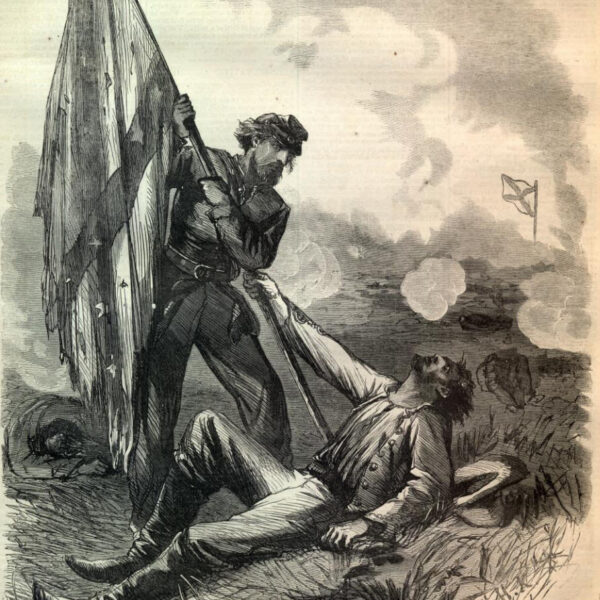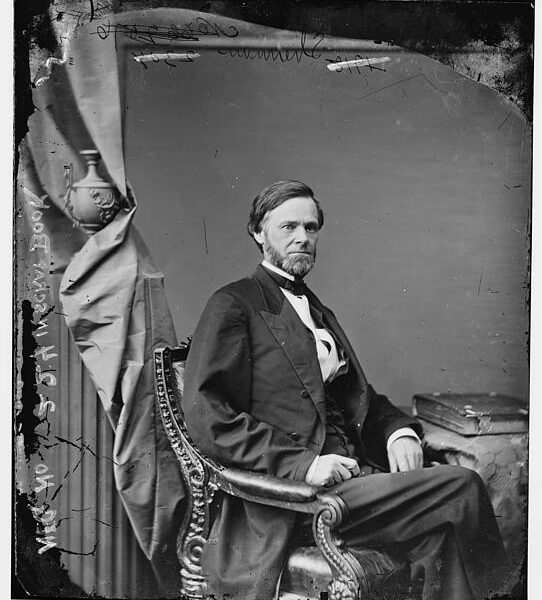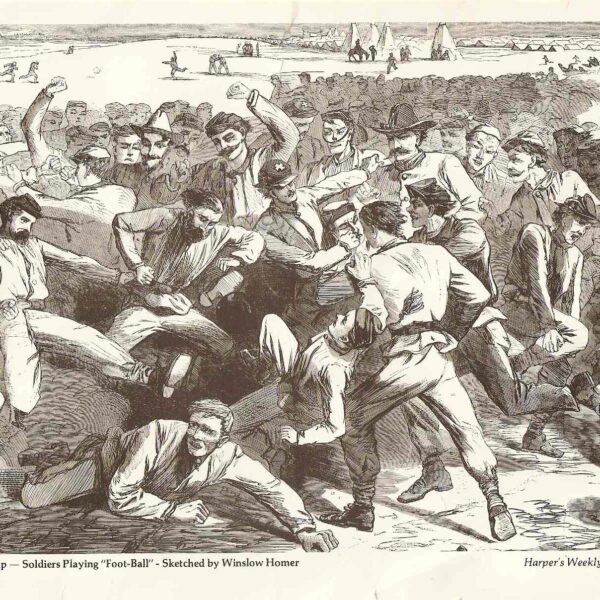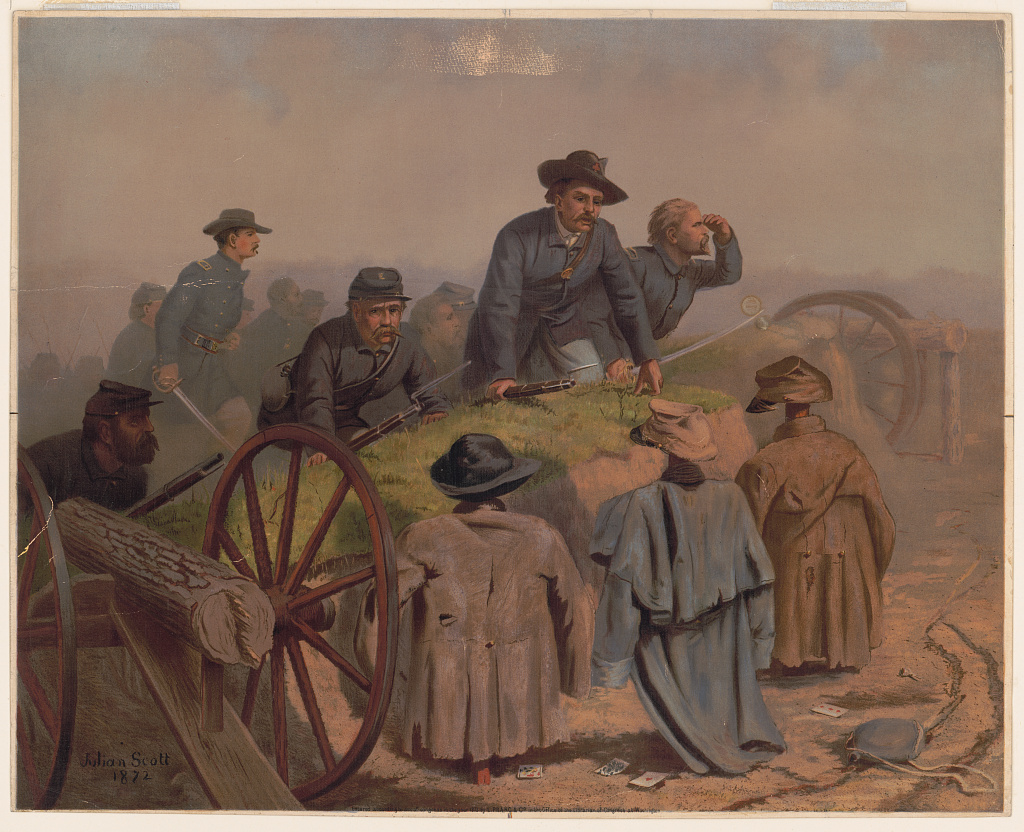Union soldiers find dummy defenders and wooden cannon after storming a Confederate trench in Julian Scott’s 1872 painting “Sold.” Both sides used such phony weapons—known as Quaker guns—during the conflict as a means to mislead the enemy. Scott, who served as a fifer in the 3rd Vermont Infantry during the Civil War, may have had first-hand knowledge of such fakery. At the siege of Yorktown in 1862—where outnumbered Confederates employed Quaker guns to deceive Union forces as to their true strength and numbers—Scott braved Rebel fire to rescue wounded comrades from the battlefield, an act for which he’d later be awarded the Medal of Honor.
You May Also Like

The Front Line
The Dying Confederate’s Last Words
The following poem from the Civil War Song Sheets collection highlights the sacrifice made by individual Civil War soldiers. It’s entitled, “The Dying Confederate’s Last Words.” Dear comrades on my…

The Front Line
Announcing Emerging Scholars Program Speakers
The American Civil War Museum The new American Civil War Museum, scheduled to open in May 2019 The Civil War Monitor is proud to sponsor The American Civil War Museum’s…

The Front Line
John Sherman and the Would-Be Thirteenth Amendment of 1861
John Sherman was a rising Republican star. A prominent member of the U.S. House of Representatives, he was on the cusp of a long Senate career. Everyone knew the man…

The Front Line
Voice from the Past: “A Great Day of Sport to Usher in the New Year”
Happy New Year! As we begin a new calendar year and a new year of sesquincentennial celebrations, we thought it fitting to look back upon New Years 1862. All this…

